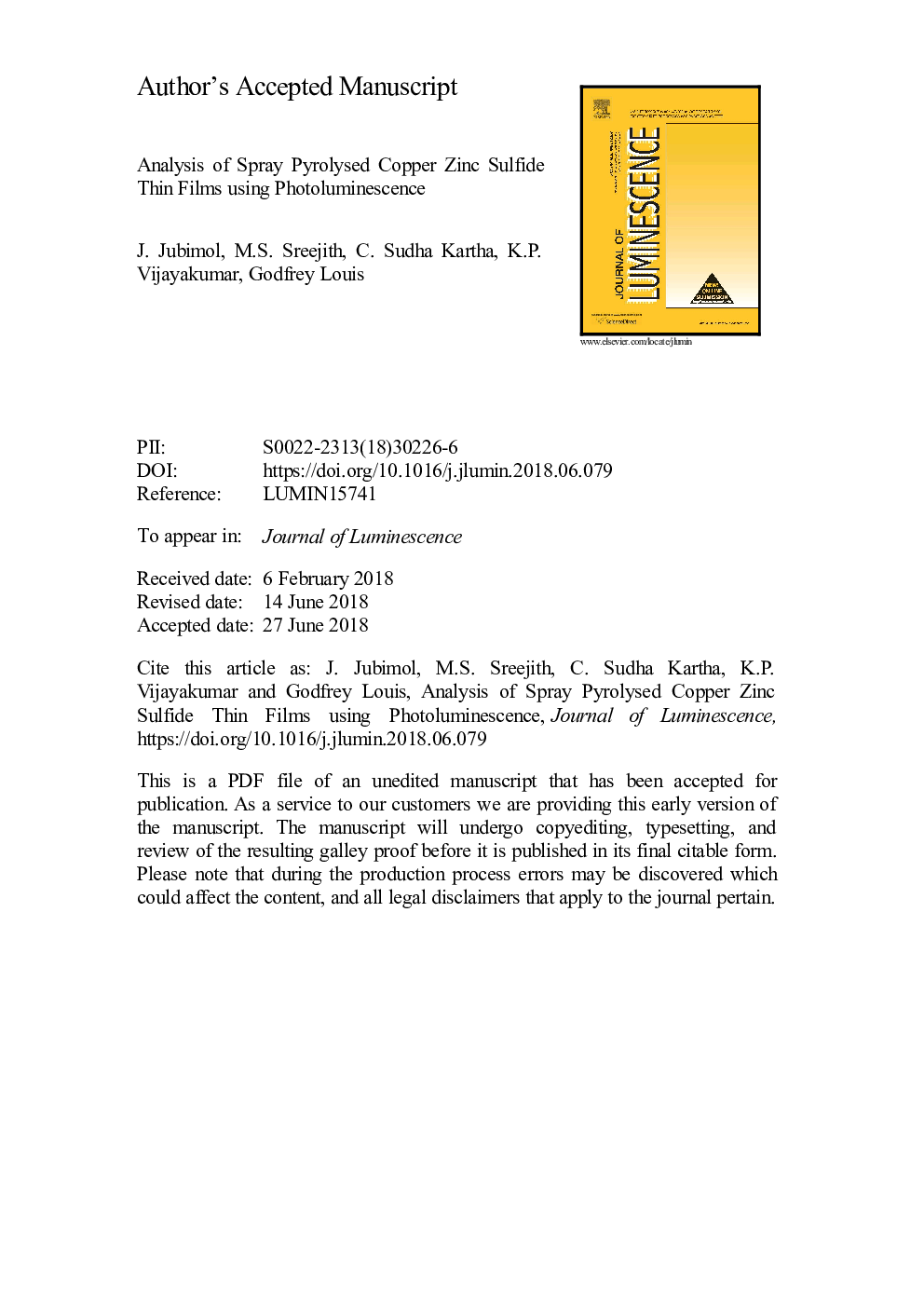| Article ID | Journal | Published Year | Pages | File Type |
|---|---|---|---|---|
| 7839739 | Journal of Luminescence | 2018 | 18 Pages |
Abstract
Copper zinc sulfide (CuZnS) is an upcoming photovoltaic material. The room temperature photoluminescence (PL) study of thin films of this material synthesized using automated chemical spray pyrolysis (CSP) is reported. The PL spectra from CuZnS comprises of a broad emission constituted by multiple peaks. In this work, ratio of intensities of peaks around 660â¯nm and 550â¯nm (I660/I550) as a function of copper ion concentration and deposition temperature is studied. The nature of spectra at lower and higher deposition temperatures seem to be significantly different. Existence of mutually interacting but independent Cu and Zn related phases are evident from PL spectra. Lower deposition temperatures favor copper related phases and higher deposition temperatures promote zinc related emissions. PL technique is used as a non-destructive tool in bringing out the potential of the material to be used as an absorber and p-type window layer in solar cell.
Keywords
Related Topics
Physical Sciences and Engineering
Chemistry
Physical and Theoretical Chemistry
Authors
J. Jubimol, M.S. Sreejith, C. Sudha Kartha, K.P. Vijayakumar, Godfrey Louis,
